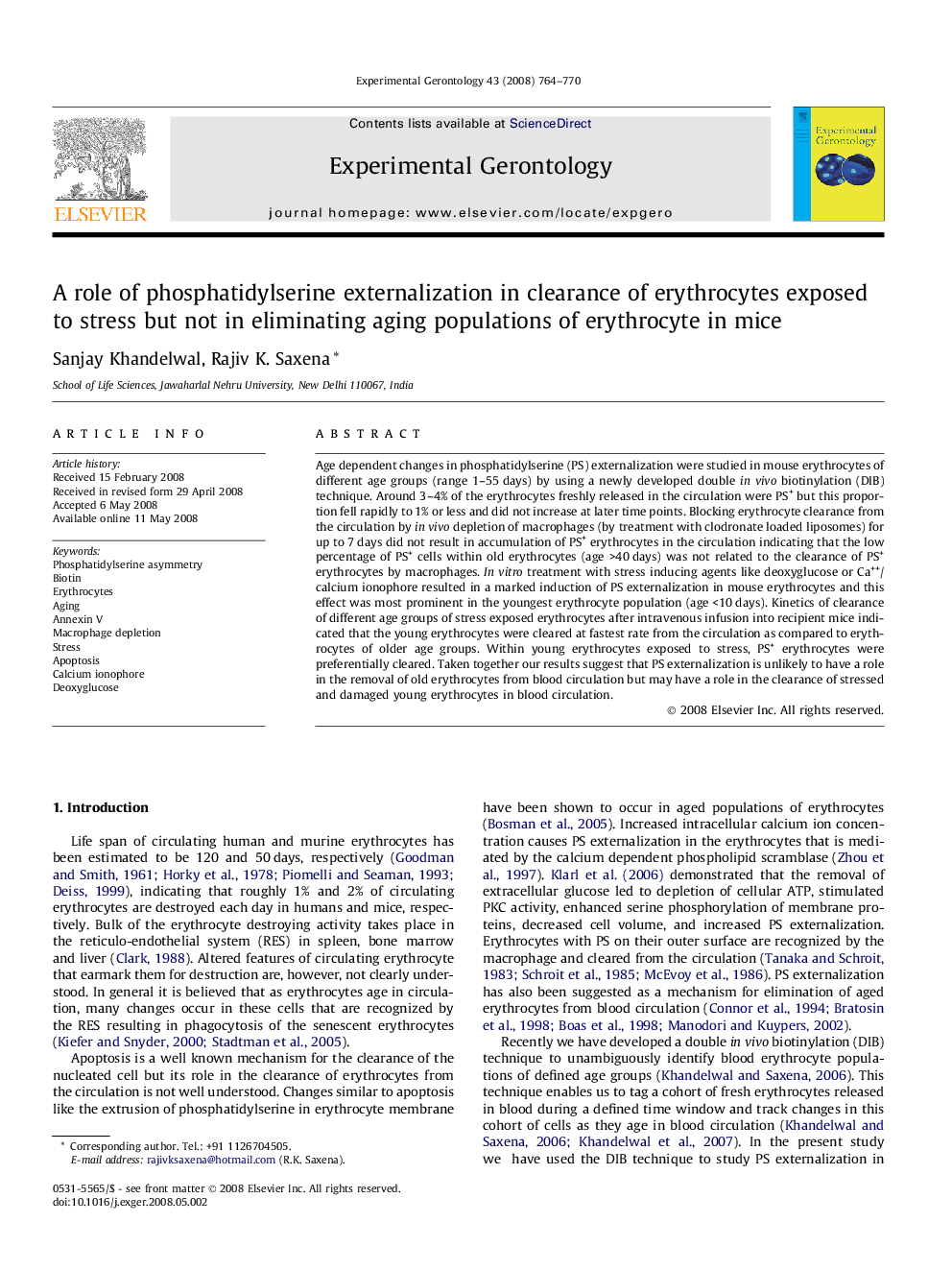| Article ID | Journal | Published Year | Pages | File Type |
|---|---|---|---|---|
| 1907097 | Experimental Gerontology | 2008 | 7 Pages |
Age dependent changes in phosphatidylserine (PS) externalization were studied in mouse erythrocytes of different age groups (range 1–55 days) by using a newly developed double in vivo biotinylation (DIB) technique. Around 3–4% of the erythrocytes freshly released in the circulation were PS+ but this proportion fell rapidly to 1% or less and did not increase at later time points. Blocking erythrocyte clearance from the circulation by in vivo depletion of macrophages (by treatment with clodronate loaded liposomes) for up to 7 days did not result in accumulation of PS+ erythrocytes in the circulation indicating that the low percentage of PS+ cells within old erythrocytes (age >40 days) was not related to the clearance of PS+ erythrocytes by macrophages. In vitro treatment with stress inducing agents like deoxyglucose or Ca++/calcium ionophore resulted in a marked induction of PS externalization in mouse erythrocytes and this effect was most prominent in the youngest erythrocyte population (age <10 days). Kinetics of clearance of different age groups of stress exposed erythrocytes after intravenous infusion into recipient mice indicated that the young erythrocytes were cleared at fastest rate from the circulation as compared to erythrocytes of older age groups. Within young erythrocytes exposed to stress, PS+ erythrocytes were preferentially cleared. Taken together our results suggest that PS externalization is unlikely to have a role in the removal of old erythrocytes from blood circulation but may have a role in the clearance of stressed and damaged young erythrocytes in blood circulation.
